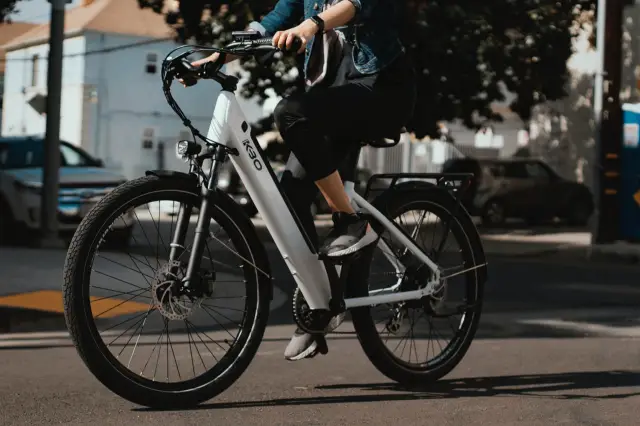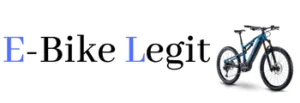In electric bikes, speed limiters are a common feature that can stop riders from reaching their top speed. Speed limiters are great for ensuring the rider’s safety, but in some situations, you may want to get more out of your electric bike.
Many e-bike manufacturers install speed limiters on their bikes to comply with local laws and regulations. While these speed limiters can be a nuisance for riders who want to experience the full potential of their e-bike, there are ways to bypass them.
In this blog post, we will explore the different methods of bypassing the speed limiter on an e-bike, including software and hardware modifications.
However, it’s important to note that these methods may not be legal in your area, and it’s important to check local laws and regulations before making any changes to your e-bike.
How Do You Bypass The Speed Limiter On A Electric Bike?
There are a few different ways to bypass the speed limiter on an electric bike, but it’s important to note that these methods may not be legal in your area, and it’s important to check local laws and regulations before making any changes to your e-bike.
1. Software hacking
Software hacking is a method to bypass the speed limiter on an electric bike by modifying the software or firmware that implements the speed limit. This method can be done by removing or altering the firmware, using third-party software tools, or modifying the bike’s control panel settings.
Removing or altering the firmware involves accessing the bike’s control system and removing or modifying the code that implements the speed limit. This method may require specialized tools or knowledge and should only be attempted by someone with technical expertise.

Using third-party software tools involves downloading software from the internet and installing it on the electric bike. These tools can adjust or remove the speed limiter, but downloading unreliable or malicious software is risky.
Modifying the bike’s control panel settings involves accessing the control panel, finding the speed limiter settings, and adjusting them. This method may require technical knowledge or specialized tools and should only be attempted by someone with technical expertise.
Modifying the software or firmware of an electric bike can void the warranty and, if done improperly, can result in potentially dangerous consequences. It’s recommended only to attempt software hacking if you have the proper technical expertise or to seek the help of a professional.
2. Hardware Modifications
Hardware modifications to bypass the speed limiter on an electric bike involve physically altering components of the bike’s system. This method is typically more involved and requires more technical expertise than software hacking.
Some common hardware modifications include:
- Replacing the speed sensor: This involves removing the existing speed sensor and replacing it with a new one that is not limited. This method can be challenging and requires a high level of technical skill.
- Disconnecting the speed limiter wires: This method involves finding and disconnecting the wires that control the speed limiter. This method is relatively simple but requires knowledge of the bike’s wiring system.
- Installing a new controller or circuit board involves replacing the bike’s existing controller or circuit board with a new one that does not have a speed limiter. This method is more involved and requires specialized tools and technical expertise.
Hardware modifications to bypass the speed limiter on an electric bike can result in potentially dangerous consequences, including electrical and safety hazards.
It’s recommended only to attempt hardware modifications if you have the proper technical expertise or to seek the help of a professional.
Additionally, these modifications may void the bike’s warranty, so it’s important to consider the risks before making any alterations.
3. Third-Party Devices
Third-party devices are external components that can bypass the speed limiter on an electric bike. This method can be less involved than software and hardware modifications and may not require technical expertise, but it still carries risks and potential consequences.
Some common third-party devices include:
- Speed limiter removal kits: These kits typically include a module or device that can be installed on the bike to remove the speed limiter. Some kits are designed to be user-friendly, but it’s still important to carefully follow the instructions and ensure proper installation.
- Performance chips or modules: These devices can be installed on the bike to improve performance, including increasing top speed. Some performance chips may also remove the speed limiter.
- External throttle controllers: These controllers can be attached to the bike’s handlebars and used to control the throttle and speed. Some models allow for adjusting the top speed, effectively bypassing the speed limiter.
Using third-party devices to bypass the speed limiter on an electric bike can result in potential consequences, including voiding the bike’s warranty and causing safety hazards.
Some devices may not be reliable or compatible with your bike, so carefully research and choose a reputable product.
Pros of Bypassing the Speed Limiter on An Electric Bike
1. Increased speed
Bypassing the speed limiter can allow the bike to reach a higher top speed, providing a more exhilarating riding experience.
2. Improved performance
Removing the speed limiter can also improve the bike’s overall performance, including acceleration and handling.
3. Customization
Bypassing the speed limiter can allow for customization and personalization of the bike to suit the rider’s preferences better.
Cons of Bypassing the Speed Limiter on An Electric Bike Include
1. Safety risks
Bypassing the speed limiter can result in potentially dangerous consequences, including loss of control, accidents, and injury.
2. Warranty void
Modifying the software or hardware of an electric bike, including bypassing the speed limiter, can void the warranty and result in costly repairs or replacements.
3. Legal consequences
In some jurisdictions, bypassing the speed limiter on an electric bike may be illegal and result in fines, impoundment, or other legal consequences.
4. Reliability concerns
Using third-party devices or modifying the bike’s software or hardware can result in reliability issues and potential malfunctions, requiring costly repairs.
Conclusion
Bypassing the speed limiter on an electric bike can provide increased speed and improved performance, but it also carries potential risks and consequences. Software and hardware modifications and third-party devices can bypass the speed limiter, but each method has its pros and cons.
Before attempting to bypass the speed limiter, it’s important to consider the potential consequences, including safety risks, warranty void, legal consequences, and reliability concerns.
It’s also recommended to research and understand the specific bike model and the method being used or to seek the help of a professional.
Ultimately, bypassing the speed limiter on an electric bike is a personal decision and should be made with caution and proper consideration. Always prioritize safety and abide by local laws and regulations when operating any electric bike.
